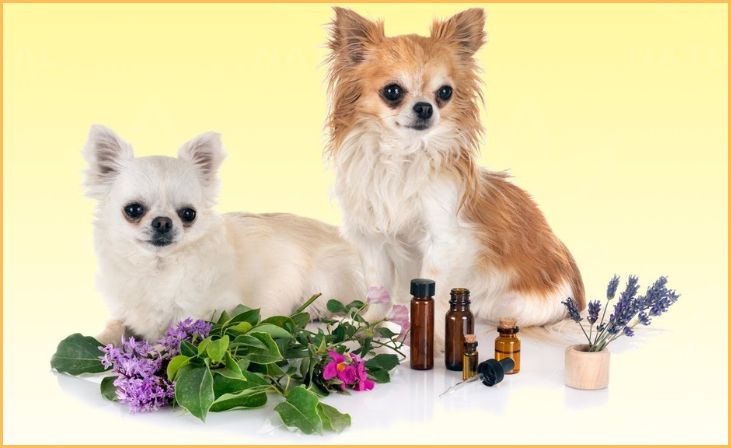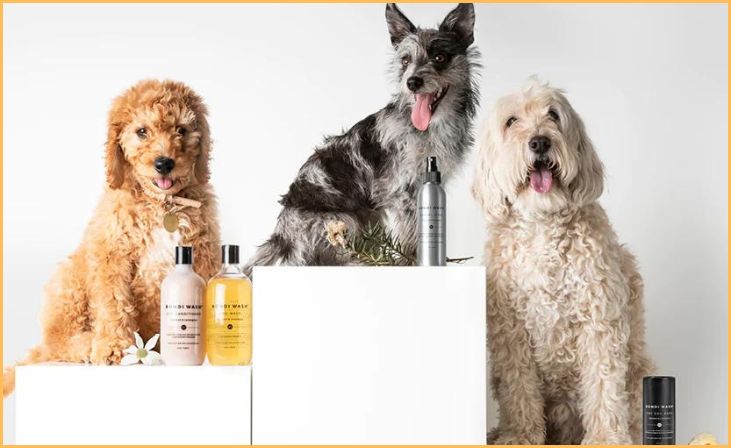Welcome to our comprehensive guide on the often-debated topic: “Are Essential Oils Safe for Dogs? 10 Things You Must Know.” As pet owners, ensuring the well-being of our furry friends is paramount. Essential oils have gained popularity for their therapeutic benefits, but the safety aspect for dogs remains a concern.
In this blog, we delve into the crucial factors every pet owner should consider before introducing essential oils into their dog’s life. From potential benefits to risks and precautions, we provide a well-rounded exploration to empower you in making informed decisions for your canine companion.
Are Essential Oils Safe for Dogs? 10 Things You Must Know
The use of essential oils for dogs has become a hot topic among pet owners seeking natural remedies for their furry companions. While these oils are renowned for their therapeutic properties, it’s crucial to address the question: “Are Essential Oils Safe for Dogs?
10 Things You Must Know.” As responsible pet guardians, understanding the potential benefits and risks associated with essential oils is paramount. In this comprehensive exploration, we will delve into ten key considerations, providing you with the knowledge needed to make informed decisions about integrating essential oils into your dog’s life.
Understanding Sensitivity Levels:

Dogs, like humans, vary in their sensitivity to different substances. Essential oils can be potent, and a dog’s sense of smell is significantly more heightened than ours. It’s imperative to recognize that what might be tolerable for one dog could be overwhelming or even harmful to another. Factors such as breed, age, and health condition play a role in determining a dog’s sensitivity to essential oils.
Also Read: How to Stop Puppy Food Aggression
Toxicity Risks and No-Go Oils:
Certain essential oils are toxic to dogs and should be strictly avoided. Oils such as tea tree, cinnamon, and citrus varieties can pose serious health risks, including skin irritation, digestive issues, or even organ failure. Understanding the specific oils that are harmful to dogs is crucial for their well-being. Always cross-check your chosen oils with a comprehensive list of pet-safe options before use.
Proper Dilution Techniques:
Even oils deemed safe for dogs require dilution before application. Undiluted essential oils can be too potent and may lead to adverse reactions. It’s essential to follow recommended dilution ratios, typically ranging from 0.25% to 2%, depending on the oil and the intended use. Dilution ensures that your dog receives the benefits without the potential harm associated with concentrated oils.
Consultation with a Veterinarian:
Before introducing any essential oils into your dog’s routine, consulting with a veterinarian is paramount. A professional opinion will consider your dog’s individual health, potential allergies, and specific needs. Veterinarians can provide personalized guidance on suitable oils, proper dilution, and safe application methods based on your dog’s unique characteristics.
Observing Behavioral Cues:

Dogs communicate through behavior, and it’s essential to observe their reactions when introducing essential oils. Signs of distress, restlessness, or avoidance may indicate discomfort or dislike. Conversely, positive reactions such as calmness or improved mood can signal that the chosen oil is well-tolerated. Paying close attention to your dog’s cues ensures a positive and tailored experience with essential oils.
Appropriate Application Methods:
Choosing the right application method is as crucial as selecting the proper oils. Whether diffusing, topical application, or incorporating oils into grooming products, understanding the most suitable method for your dog’s needs is vital. For example, some dogs may be averse to direct application, making diffusion a more effective and stress-free option.
Also Read: Exercises That Your Puppy Needs
Age and Size Considerations:
Puppies, senior dogs, and smaller breeds may have different sensitivities and dosage requirements compared to their larger or adult counterparts. Age and size can influence how essential oils are metabolized in a dog’s system, emphasizing the need for customized approaches based on individual characteristics.
Avoiding Contact with Eyes and Mucous Membranes:
Just as with humans, essential oils should never come into direct contact with a dog’s eyes or mucous membranes. Inadvertent contact can lead to irritation and discomfort. When applying oils topically, exercise caution around sensitive areas and ensure that the oils are well-diluted to prevent any adverse reactions.
Quality Matters:
Not all essential oils are created equal. Opting for high-quality, pure oils ensures that your dog receives the intended therapeutic benefits without exposure to potentially harmful additives or contaminants. Choose oils from reputable sources and, if possible, those labeled specifically as safe for pets.
Balancing Consistency and Caution:

Consistency in the use of essential oils is key to observing their effects on your dog’s well-being. However, this should always be balanced with caution. Regularly reassess your dog’s response to essential oils, remain informed about any emerging research or safety guidelines, and be prepared to adjust your approach based on your dog’s evolving needs.
In navigating the realm of essential oils for dogs, a well-informed approach is paramount. “Are Essential Oils Safe for Dogs? 10 Things You Must Know” underscores the importance of recognizing individual sensitivities, understanding toxicity risks, and implementing proper application methods.
Also Read: DIY Dog Halloween Costumes
By consulting with a veterinarian, observing behavioral cues, and prioritizing quality, you can strike a harmonious balance between the potential benefits of essential oils and the safety of your beloved canine companion. Remember, a mindful and informed approach ensures a positive and enriching experience for both you and your four-legged friend.
Conclusion
The use of essential oils for dogs demands careful consideration and responsible application. While certain oils can offer therapeutic benefits, others may pose risks. Prioritize your pet’s safety by consulting with a veterinarian, researching thoroughly, and introducing oils cautiously.
Armed with the knowledge from our guide, you can confidently navigate the world of essential oils, ensuring a harmonious balance between your dog’s well-being and the potential benefits these oils may bring to their life.
FAQs
Not all essential oils are safe for dogs. Some can be toxic, while others require dilution. Always research and consult with your veterinarian before using any essential oil on your dog.
Start slowly and with minimal amounts. Observe your dog for any adverse reactions, and always choose pet-safe, high-quality essential oils. Dilute oils appropriately and seek guidance from a vet for personalized advice.







